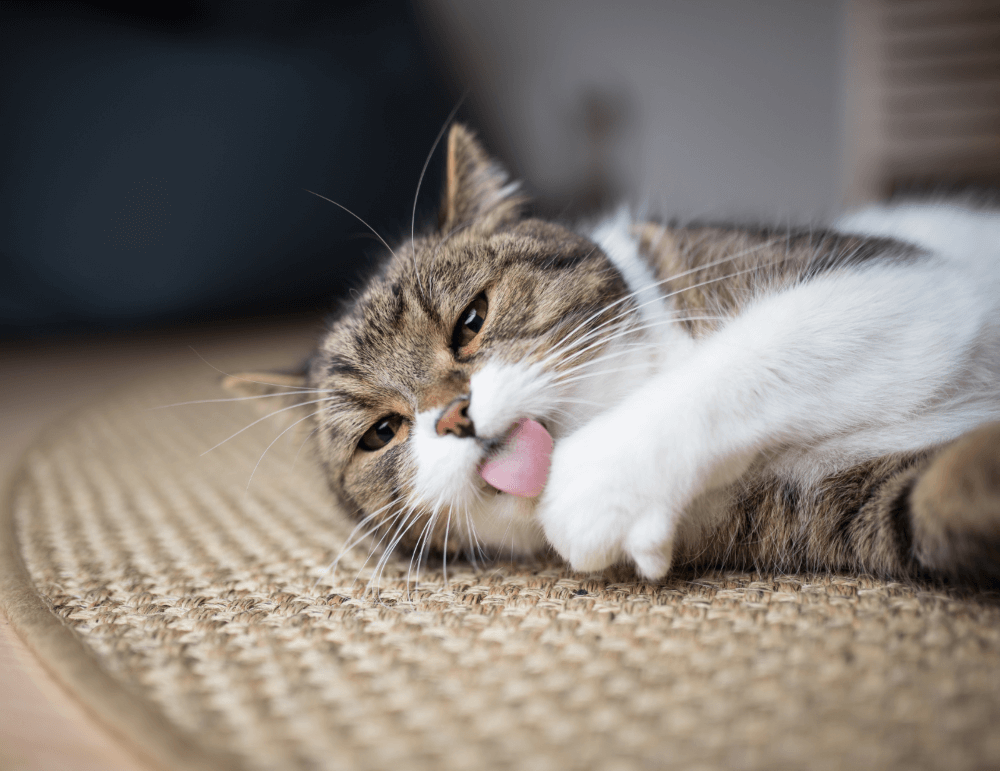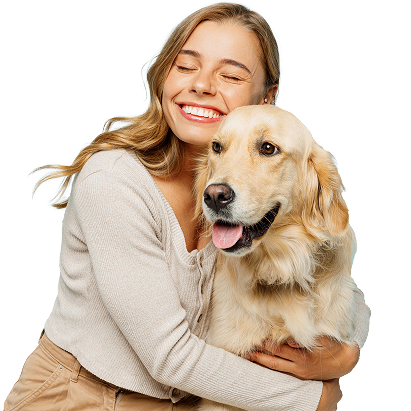How can I look after my pet’s skin?
The appearance of your pet’s skin and coat can tell you a lot about their general health status; strong, shiny and lustrous fur is usually an indicator that your pet’s health is in tip-top form, whilst dull, scurfy or greasy fur can be an indicator that something is not quite right. We understand the importance […]
The appearance of your pet’s skin and coat can tell you a lot about their general health status; strong, shiny and lustrous fur is usually an indicator that your pet’s health is in tip-top form, whilst dull, scurfy or greasy fur can be an indicator that something is not quite right. We understand the importance of healthy skin here at Protexin Veterinary, so have provided you with some handy tips to help maintain your pet’s coat and skin in its optimal condition.
Good-quality diet
Quality and balance are key when looking for a complete diet for your pet. Life-stage diets (puppy or kitten, adult, senior) individualised to your dog or cat’s specific requirements are ideal for optimum health. Feeding a nutritionally balanced diet containing all essential vitamins, minerals and fatty acids (particularly omega-3 fatty acids EPA and DHA) has been shown to improve coat quality and skin condition. Omega-6 fatty acids (primarily linoleic acid) are a key component of the skin’s waterproof barrier; this barrier helps prevent harmful substances being able to breach the skin and also locks in moisture reducing the risk of dry, flaky patches developing. Omega fatty acids are considered as essential in dogs and cats because they cannot be made in the body and must be obtained from your pet’s diet.
Bathing and grooming
The grooming and bathing requirements for your dog or cat will depend on several factors including breed, size, coat length/type, lifestyle and often temperament! Fur that becomes matted is extremely uncomfortable for your pet as it pulls and damages the underlying skin. Not only will regular grooming help distribute the natural oils through the coat, but your pet will be delighted to have some quality one-on-one bonding time with you. Long-coated breeds are higher maintenance and may need a wash and haircut every 4-6 weeks, with regular brushing in between. You should only use pet-approved shampoos as your dog’s skin has a more neutral pH balance than human skin (which tends to be more on the acidic side), so can become irritated or inflamed if the incorrect shampoo is used.
Topical skin products
Unless your dog or cat has a specific skin condition, they may not need additional topical products. However, some dogs and cats require ongoing support in order to manage their condition and regular application of shampoos, mousses, sprays and spot-ons should be discussed with your vet; these products act to moisturise and soothe the skin, remove allergens and debris from the coat and restore the skin barrier. Maintaining a healthy skin barrier is vital in keeping the skin hydrated, stopping harmful substances from entering the body and preventing an imbalance of bacteria developing on the skin (called a dysbiosis). Be sure to use products specifically formulated for pets, some of which should be used under veterinary guidance if being used to treat a diagnosed skin condition.
Regular inspection
Not only will your pet enjoy the fuss and your undivided attention, but regular grooming will allow for inspection of the skin underneath; you should check your pet’s skin regularly for parasites, dryness, flaking/scabs, redness and even lumps and bumps. If you notice any of these signs, or something else that is abnormal for your pet, book an appointment with your vet so any problems can be treated early.
Flea and parasite prevention
Fleas, ticks, mites and lice can cause intense itching and damage to the skin, not to mention that some carry diseases which could make your pet poorly; therefore it is important to keep up to date with regular parasite prevention. Also, with our climate becoming warmer, your pet should now be parasite protected all year round. Surprisingly, indoor pets are still at risk of catching fleas as they can be carried inside on clothing or shoes, or by other animals in your household. Your pet’s exact requirements may change depending on the season, your geographical location and whether they stay indoors or venture outside. If you are unsure then speak with your vet to find the most appropriate product. Also, always make sure that your parasite treatment is suitable for the species of your pet as some products suitable for dogs can be toxic to cats (and vice versa).

Stress-free environment
Dogs and particularly cats may start to overgroom when they are stressed; this can result in hair loss, redness and damage to the skin. Overgrooming is often triggered by a change in your pet’s immediate environment that makes them anxious (e.g. building works, having strangers to stay, a new cat coming into their garden). Calming supplements, pheromone diffusers and pheromone collars may help reduce stress. It is important to note, however, that occasionally overgrooming can also be a sign of a more serious underlying condition, so speak to your vet for further advice if your pet is overgrooming.
Make an appointment with your vet
The most common symptoms which could indicate an underlying skin condition may include the following:
- Itching or excessive licking
- Scabs or sores
- Flaking skin/dandruff
- Redness and rashes
- Thinning, brittle or dull fur
- Hair loss (alopecia)
If you are concerned that your pet may have a skin condition, you should make an appointment to see your veterinary surgeon as soon as possible so that they can examine your pet and perform any necessary tests. Medications such as antibiotics, shampoos and drugs to calm an itch may be prescribed; however, treatment will depend on the underlying cause of the problem, so it is very important to follow instructions given by your vet.
 Pet Owner
Pet Owner 



